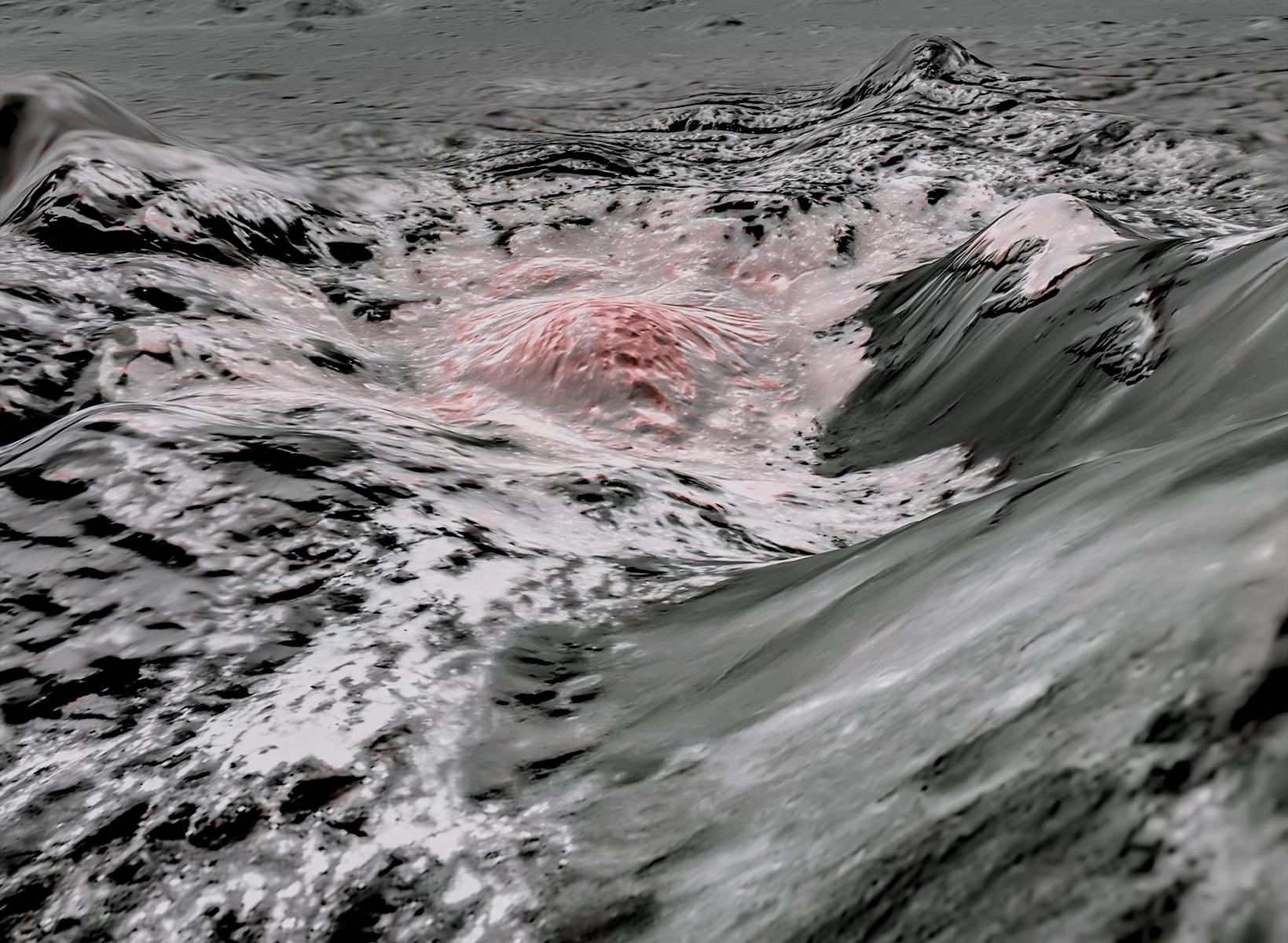A new and thorough analysis of high-resolution images and data from NASA’s Dawn mission have now provided fresh insights into the dwarf planet Ceres, with intriguing evidence that Ceres has a global subsurface salty ocean, and has been geologically active in the recent past.
“Evidence that Ceres has long-lived deep brine reservoirs is an exciting result,” Dr. Hannah Sizemore told Universe Today. Sizemore is a co-author on five of seven papers published this week in various journals in Nature, detailing Dawn’s explorations of Ceres. “That a body of Ceres’ size can retain both heat and interior liquids over the age of the solar system implies that small bodies are more geologically active — may be more ‘habitable’ — than we thought.”
Dawn traveled to the asteroid belt to orbit both the asteroid Vesta and Ceres. It studied Ceres for over three and a half years – from March 2015 to November 2018 — until the spacecraft’s hydrazine maneuvering fuel was depleted. At closest approach, the orbiter had dipped to less than 22 miles (35 kilometers) above the surface. The spacecraft spotted intriguing landforms and features across Ceres that showed it to be a unique and varied world.
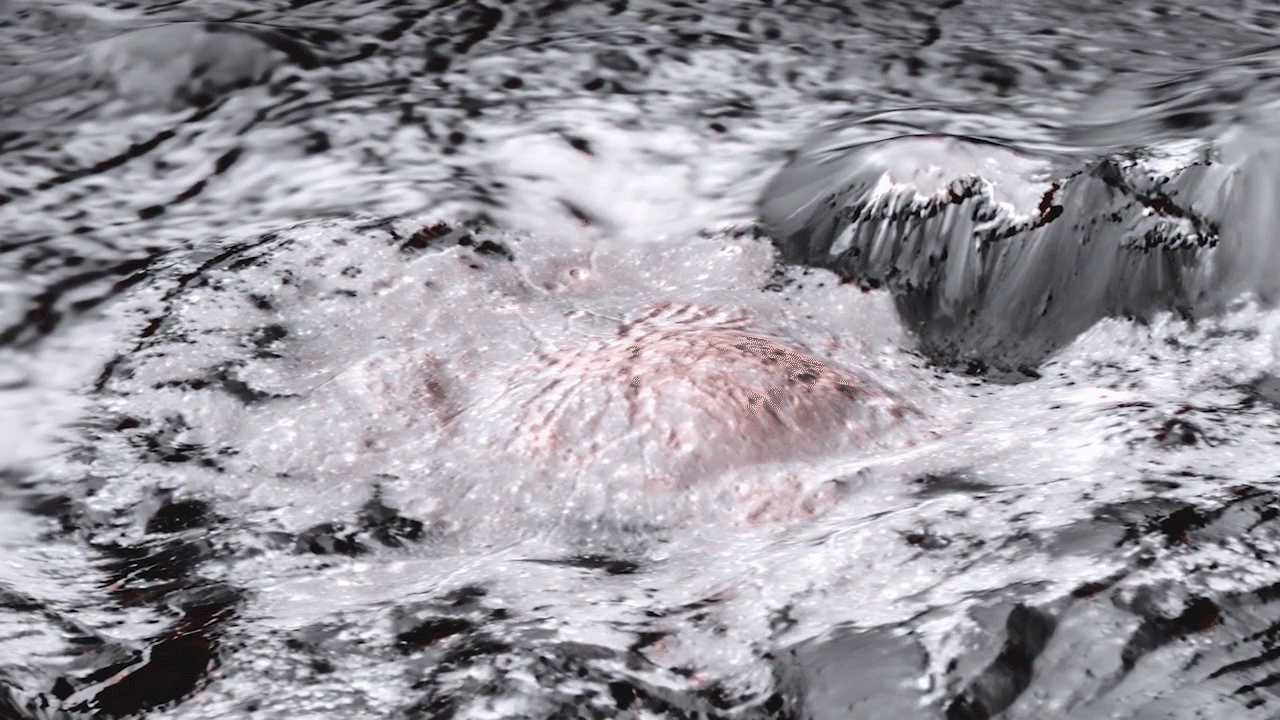
A bright area in a crater called Occator was among the most captivating features. Hinted at more than a decade ago by the Hubble Space Telescope, Dawn scientists concluded the mysterious bright spots were sodium carbonate – a compound of sodium, carbon, and oxygen. The compounds likely came from liquid that percolated up to the surface and evaporated, leaving behind a salt crust that was highly reflective.
But by the mission’s end, scientists still hadn’t determined where the liquids came from: did it come from deep inside the dwarf planet and bubble up to the surface in a volcanic process? Or did the impact that created the crater form a shallow melt that refroze to create the bright features.
The new research, using images and gravity data from Dawn, suggests that both may have happened.
“The gravity data tells us there is probably a deep reservoir of brine – salty water – about 40 kilometers below Occator,” said Sizemore, who is a Senior Scientist at the Planetary Science Institute. “Some of that deep water likely erupted on the surface and contributed to bright spots and other features in Occator.”
On the other hand, Sizemore continued, image-based analysis of the large flows and small hills inside the crater suggests that shallow sheets of muddy impact melt flowed around the inside of the crater.
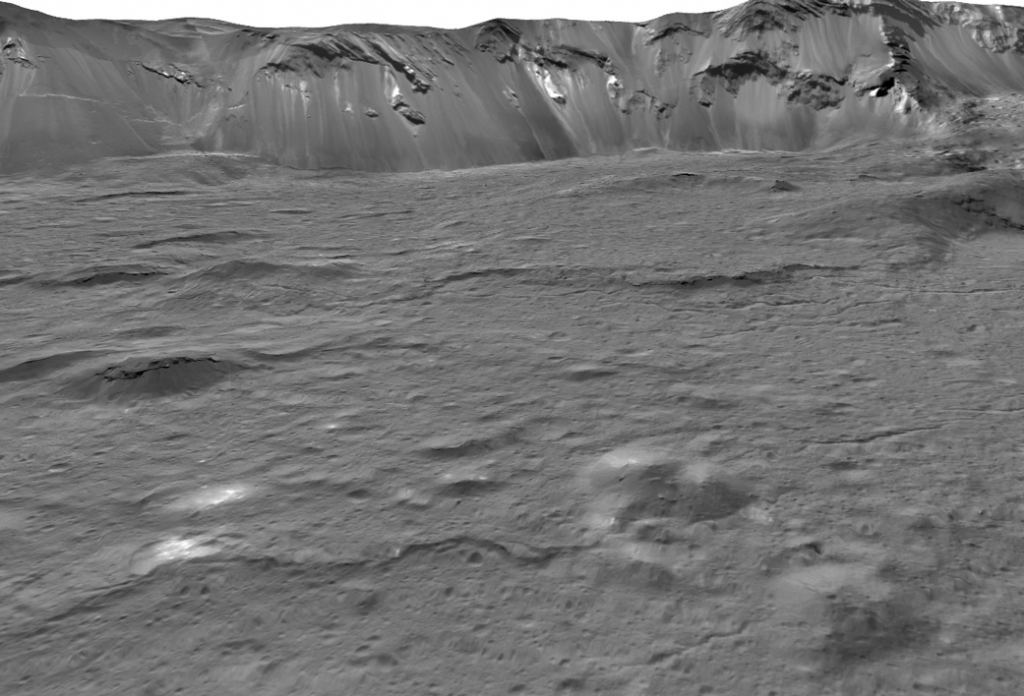
“This formed interesting features as they refroze,” Sizemore said. “Both of these are exciting, because it means there were transient and long-lived sources of water in this area, and extensive mixing. Liquid water and mixing are always exciting for astrobiology.”
The bright conical hills and knobs are similar to small ice hills in Earth’s polar regions that are formed by frozen pressurized groundwater. These features in Occator crate would require the movement of water and/or ice slurries to form, and this activity must have gone on for a long time after the impact that created the crater.
But if Ceres has a subsurface ocean, how could it remain warm enough to keep it liquid, since the dwarf planet doesn’t experience tidal forces from a large planet like some of the moons around Saturn or Jupiter?
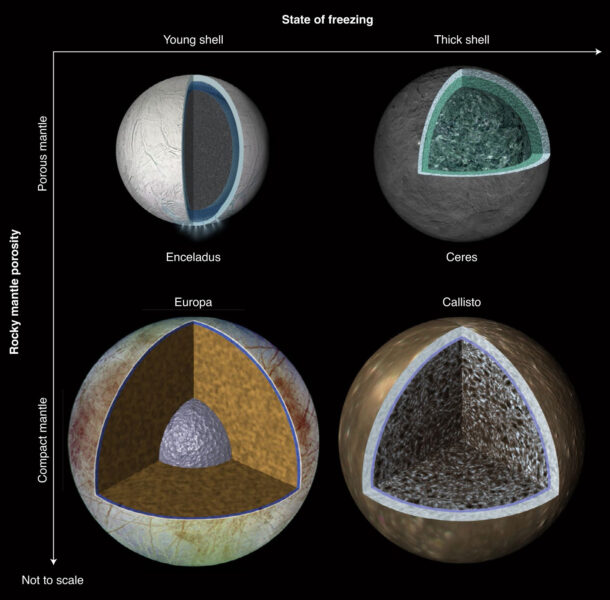
Top left: NASA / JPL-Caltech / UCLA / MPS / DLR / IDA; Top right: NASA / JPL-Caltech; Bottom: NASA / JPL
“Most of Ceres’ subsurface ocean is frozen today,” Sizemore said in an email, “with relatively small amounts of remnant liquid. Retaining any liquid is challenging, given that tidal heating doesn’t occur. We think that clathrate hydrates (water ice with gases such as methane trapped in the crystal lattice) make Ceres’ crust very insulating. Clathrates effectively act like a blanket that allows the dwarf planet to hang on its interior heat.”
Ceres has over 130 of these bright areas, most inside impact craters. The global nature of these bright regions suggested early on to Dawn scientists that Ceres had a subsurface layer of briny water ice, and the impacts that formed the craters would have ‘unearthed’ the mixture of ice and salt.
Ceres has a diameter of about 600 miles (960 km), giving it a size equivalent to 37% of the land area of the continental United States. Occator crater is 57 miles (92 kilometers) across, and Sizemore said the bright spots within the crater formed much more recently, perhaps less than 20 million years ago.
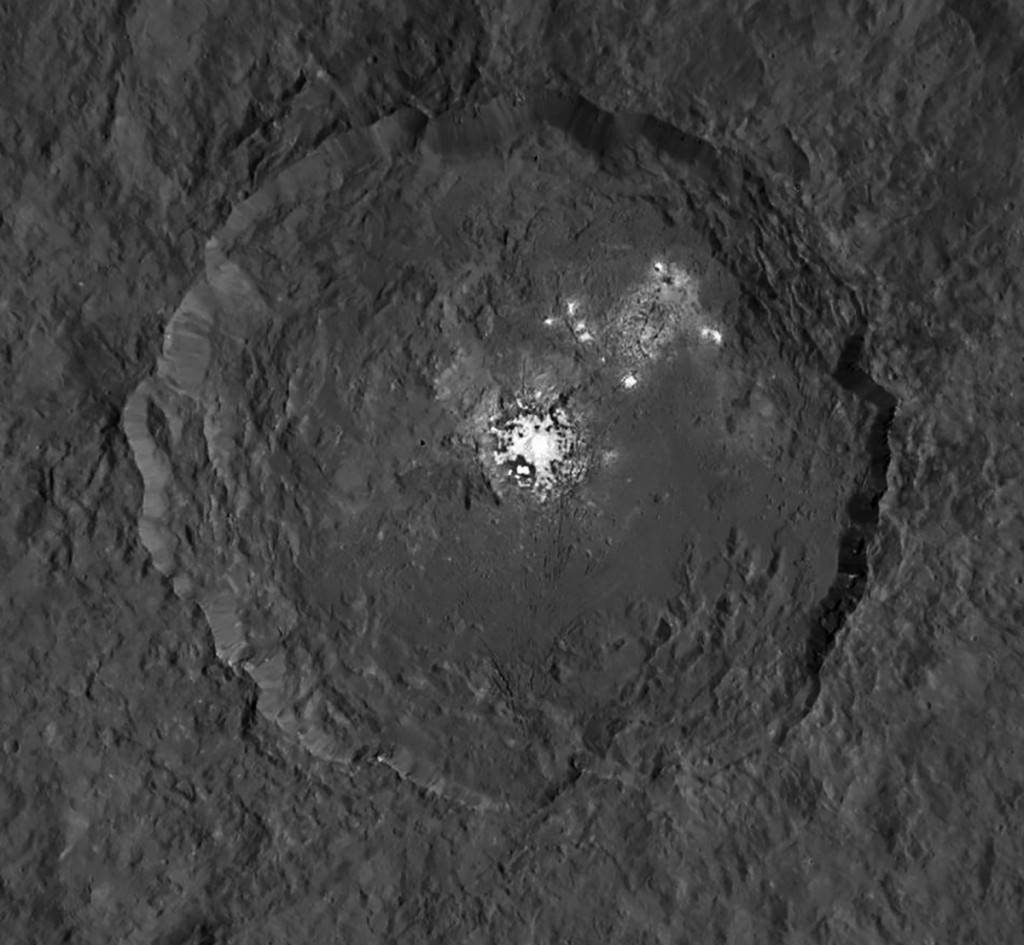
The brightest area at the center of the crater, called Cerealia Facula, was found to have hydrated chloride salts. In a study led by Maria Cristina De Sanctis, she and her team found that since these salts dehydrate very quickly, the brines may still be percolating to the surface, indicating that salty fluids could still exist in the interior of the dwarf planet. In another paper, Andreas Nathues and colleagues found that Ceres underwent a period of cryovolcanic activity starting around nine million years ago, and persisted until very recently.
Another paper, published by Britney Schmidt and colleagues in Nature Geoscience, show that the mounds and hills in Occator crater may have formed when impact-induced water flows froze. This suggests that cryo-hydrologic processes extend beyond Earth and Mars, and were active on Ceres in the geologically recent past.
“Dawn accomplished far more than we hoped when it embarked on its extraordinary extraterrestrial expedition,” said Mission Director Marc Rayman of NASA’s Jet Propulsion Laboratory in Southern California. “These exciting new discoveries from the end of its long and productive mission are a wonderful tribute to this remarkable interplanetary explorer.”
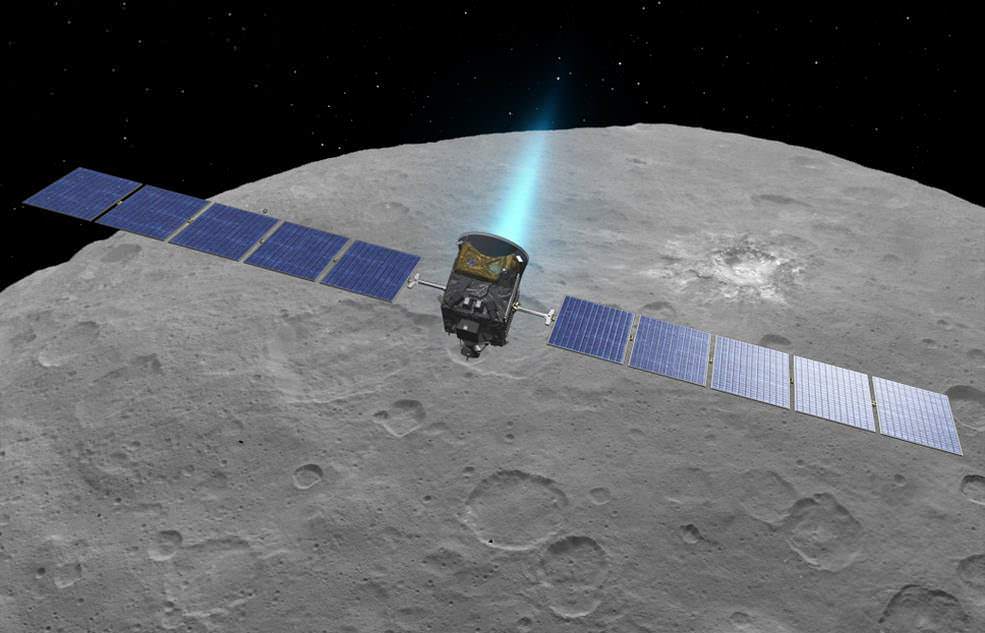
You can read the full slate of papers on Ceres published this week, found here: https://www.nature.com/collections/agdgfadcag
- Castillo-Rogez, J. C. & Rayman, M. D. Nat. Astron. https://doi.
org/10.1038/s41550-020-1031-5 (2020). - De Sanctis, M. C. et al. Nature 536, 54–57 (2016).
- Nathues, A. et al. Nat. Astron. https://doi.org/10.1038/s41550-
020-1146-8 (2020). - De Sanctis, M. C. et al. Nat. Astron. https://doi.org/10.1038/
s41550-020-1138-8 (2020). - Scully, J. E. C. et al. Nat. Commun. https://doi.org/10.1038/
s41467-020-15973-8 (2020). - Raymond, C. A. et al. Nat. Astron. https://doi.org/10.1038/s41550-
020-1168-2 (2020). - Fu, R. R. et al. Earth Planet. Sci. Lett. 476, 153–164 (2017).
- Hendrix, A. R. et al. Astrobiology 19, 1–27 (2019).
Sources: Planetary Science Institute, Nature, JPL, email correspondence with Dr. Hannah Sizemore

